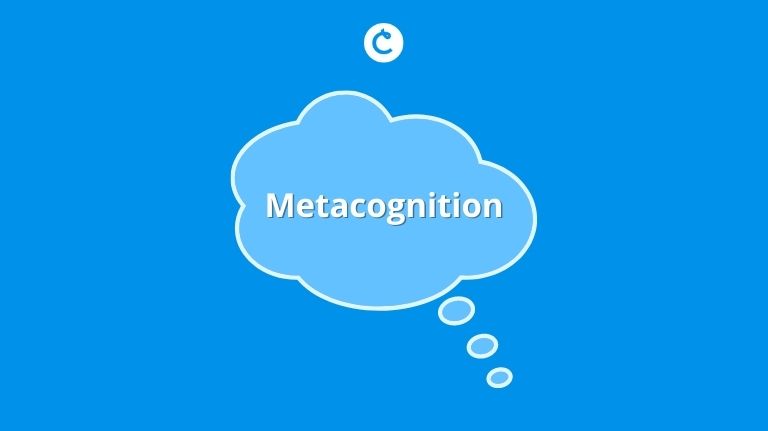Promoting Metacognition in Classtime
No matter the subject area, all teachers want their students to be thinkers.
We want them to be reflective, pursue topics in-depth, attack problems from multiple angles, and draw complex conclusions. But how do they get better at that kind of thinking? By developing their metacognition — the ability to think about their thinking.
Technology aside, making an effort to develop students’ metacognitive skills can unlock some pretty awesome results. For instance, they begin to:
1) Focus on mastery, rather than just performance.
2) Take on a heavier “cognitive load” than their teacher.
3) Establish, reflect on, and update personal goals.
There’s a whole bunch of research that supports that the skill of metacognition boosts student learning outcomes. Here’s just a few examples:
– Schneider and Pressley (1989) write that students equipped with metacognitive knowledge about reading and memory improve their uses of learning strategies. In their study, metacognition gave students the capacity to understand when and why they should use certain learning approaches.
– In her book “Fall Down 7 Times, Get Up 8, “ Debbie Silver suggests that adults model the thinking and behavior that they want to see in children. She recommends, “Adults can help students learn to internalize self-regulation by modeling the behavior they want to see in children. Orally elaborating (thinking aloud) about one’s choice emphasizes the conscious nature of taking control of the situation.” In other words, modeling metacognitive practices helps turn the productive thinking and actions over to the learners themselves.
How can Classtime help in developing metacognition and boost student reflection? Let’s look at a few specific areas and discuss some practical strategies where it can make it happen.
Strategy 1: Mastery Development
Classtime is an app built on assessment— that means it can serve as a powerful way to develop and measure students’ content & skill mastery.
In the example below, I had one of my World History classes try a duplicate question set at the beginning and then at the end of a block. Here, students–and myself–clearly can observe their mastery of some of the day’s objectives (the first two) after going through the day’s activities.
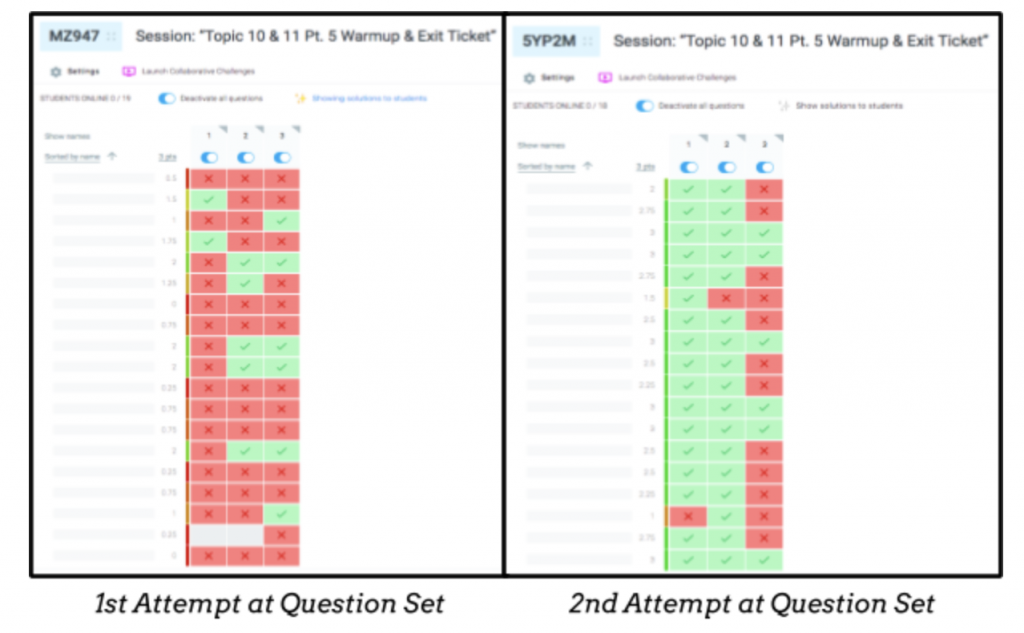
Here’s the specifics:
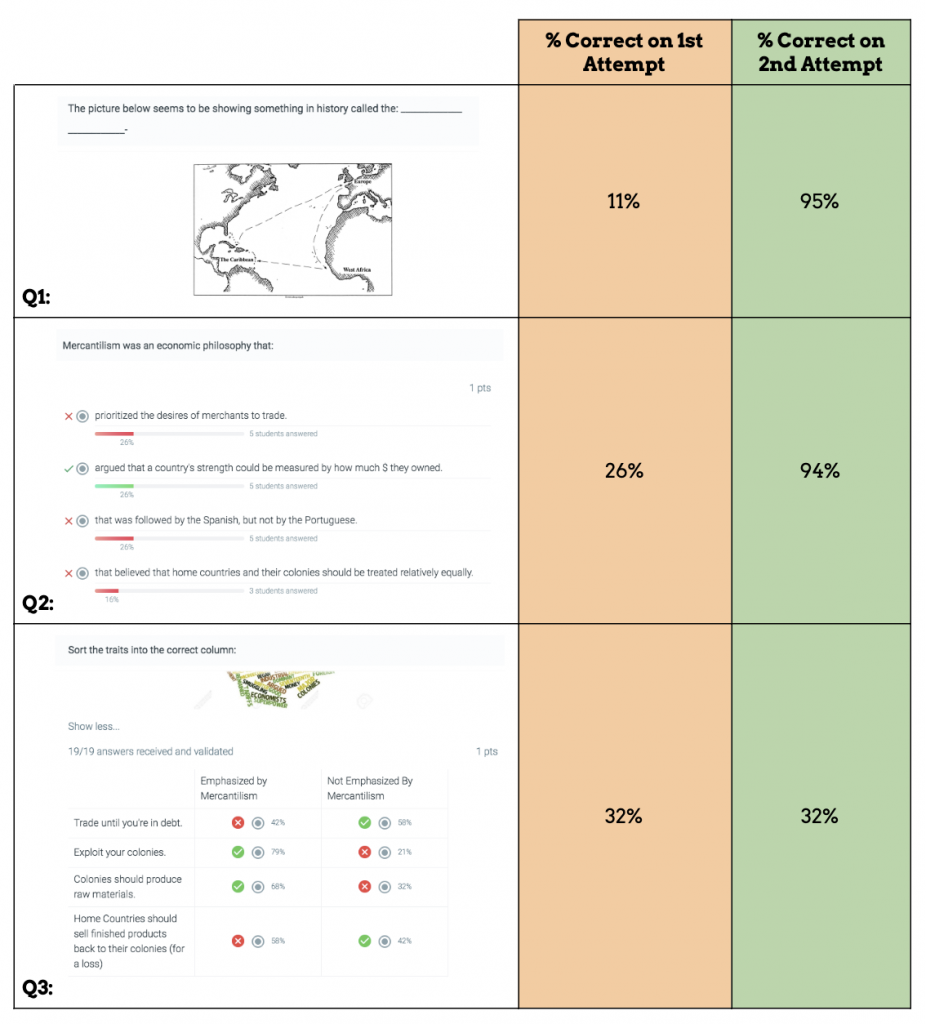
Note: Click here to see how the lesson addressed the learning objectives that I asked students about in the warmup and exit ticket.
It’s worth noting that Classtime in this instance simply isn’t serving as just a measurement tool–it’s also teaching students how to learn to discard less important information they’ve encountered throughout their day and study particular material more intentionally.
Another thought too– what if you were to have students return for a period of a few weeks to a comprehensive Classtime question set? Just imagine the possibilities!
Strategy 2: Student-Centered Reflection
Properly wielded, Classtime can also assist students by helping them evaluate their progress, contemplate varied approaches for learning content, and evaluate learning approaches and final products. Actually, you can have Classtime do this already, if you haven’t tried it before.
Just enable the session reflection option when you start your session:
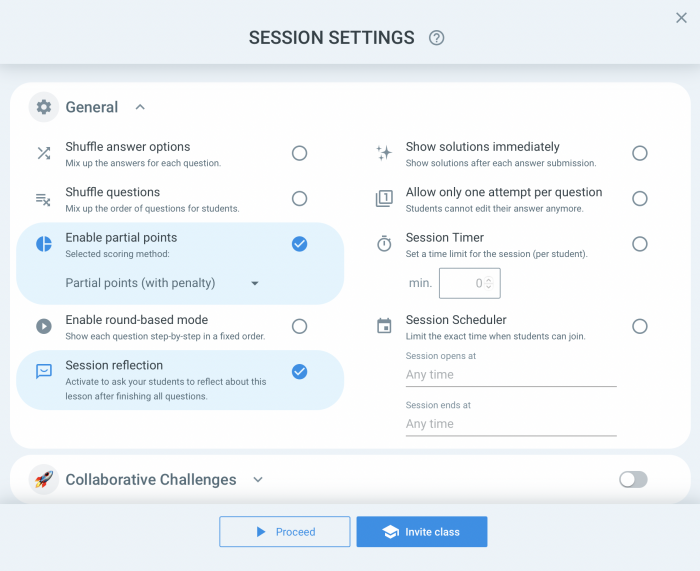
At the end of the question set, students will then be prompted with the following:
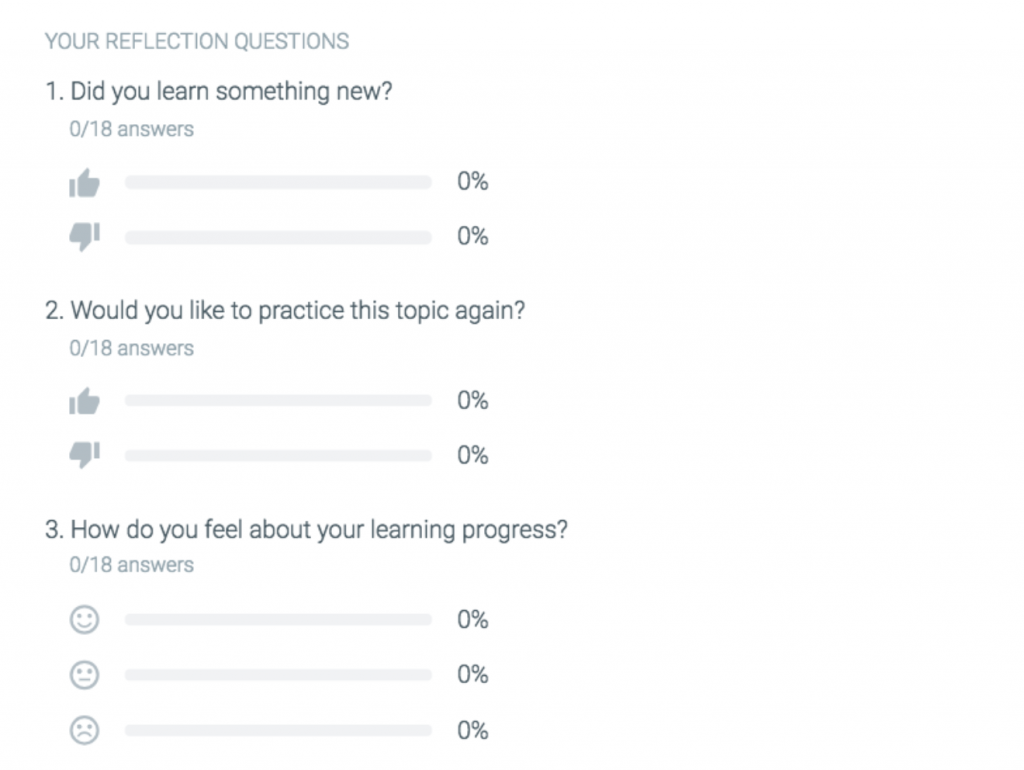
However, I highly recommend that you don’t simply “throw” one of these reflective sessions at your students without some preparation and practice beforehand.
When I first started using Classtime for student-centered metacognition, I developed and modelled quite a few prompts for them beforehand as independent question sets. Really, these were just to get a habit of reflective thinking started.
Here’s some of the sets I used with them:
Set 1 | For My Younger Students
1. This topic was easy( or hard) to learn because___.
2. What helped me learn ___ was ___.
3. I can do better ___ if I ___.
4. My teacher or classmates helped me learn ___ because___.
Set 2 | For My Older Students
1. This topic was easy or challenging for me because___.
2. What helped me to learn most easily was___.
3. If I think about my learning, what I can do to learn more easily is___.
4. How might family/friends support my learning is ____.
Whether we use tech or not to do it, just remember that empowering students to develop as thinkers shouldn’t be limited to a single lesson, subject, or time of year. It’s a main purpose as educators.
Strategy 3: Goal-Setting
If you’ve only ever thought of Classtime as an assessment app, you’ve been missing a big opportunity to easily model types of goals to be set, create prompts, and gather goals in one central place for review.
The long-term aim is for learners to encounter large learning tasks and begin to create their own SMART (Specific, Measureable, Attainable, Relevant and Time-bound) goals, and then utilize Classtime to allow students to return to their goals in a final step: reflection.
There’s A LOT of literature already out there on how to create SMART goals. Here’s how I did so with my students. Feel free to use it yourself!
Let’s focus on how Classtime fits into the metacognitive side of goal setting.
Modeling
No matter the subject area or age, modeling for your students how to create SMART goals is essential. Usually, students often aren’t used to the specificity and time elements required. I recommend that when you send a question set to your students for them to write their goals, you utilize the “optionally, add more details here” section to give them some scaffolding. For instance:
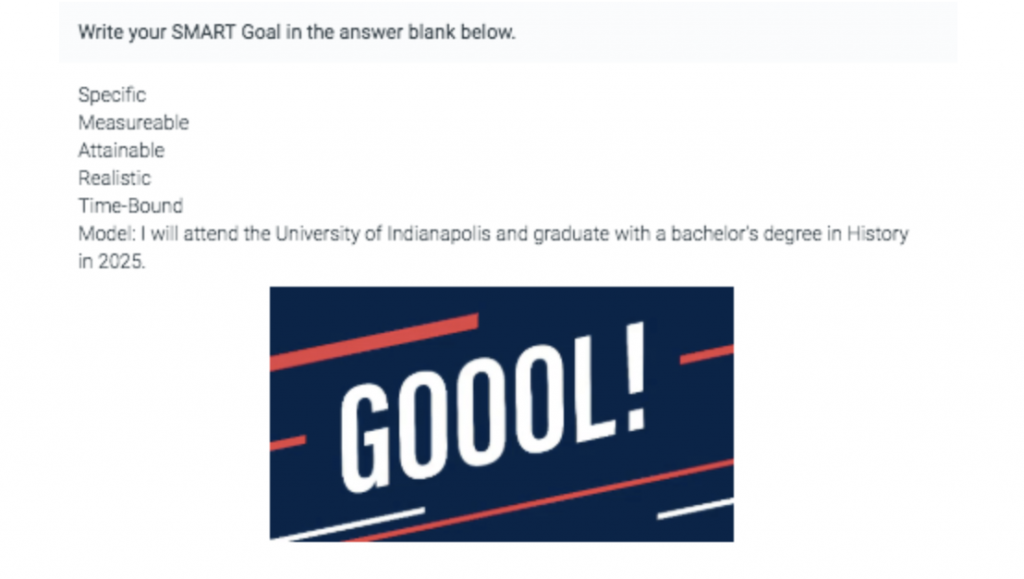
Gathering
Actually, gathering is the easiest part! Just have your students submit their goals like any other answer they might punch into Classtime. Just remember–students are going to be returning to these goals (more on that in a second), so be sure you’ve got the “allow only one attempt per question” setting turned off.
Sharing
I should note there’s conflicting opinions as to whether goals are more likely to be achieved if they’re shared with others or kept to yourself. I’m not going to wade into that debate, but you’re more than welcome to use the teacher dashboard on Classtime to share out student responses. It can be a powerful tool in the right hands for the right purpose.
Returning to Goals
Besides the creation of the SMART goals themselves, having students reflect on their goal progression might be the most important step. I’ve typically had all of my students first set, later return, and finally conclude their SMART goals through a series reflection-based questions. All of them were open-ended, but could be completed and updated multiple times:
1. The part of this goal that (was easy/I think will be easy) was/is ____________ because _________.
2. The part of this goal that (was challenging/I think will be challenging) was/is ____________ because _________.
3. How (have or might) my family/friends support my achievement of my goal?
Of course, there were a whole series of questions besides these I could have asked, but the point is that I wasn’t asking them to set their SMART goals arbitrarily. I wanted them to critically think about future/past challenges, support structures, and any other concerns that come along with long-term planning.
If you’d like to use this SMART goal question set in Classtime yourself, you can make a copy using this link.
The easiest way to learn more is to start a session of your own and take the tour. It takes less than three minute – it’s that simple!
Until next time–happy thinking!
 This is a guest post written by Nate Ridgway, a tech-loving history teacher in Indianapolis, Indiana. He specializes in lesson design and differentiation, and also is licensed in Special Education Mild Interventions. He’s taught in both middle school and high school settings, but currently is enjoying teaching World History & Dual Credit U.S. History. He currently is working on finishing a Masters degree in History at the University of Indianapolis and serves on Classtime’s Pedagogical Advisory Board.
This is a guest post written by Nate Ridgway, a tech-loving history teacher in Indianapolis, Indiana. He specializes in lesson design and differentiation, and also is licensed in Special Education Mild Interventions. He’s taught in both middle school and high school settings, but currently is enjoying teaching World History & Dual Credit U.S. History. He currently is working on finishing a Masters degree in History at the University of Indianapolis and serves on Classtime’s Pedagogical Advisory Board.

